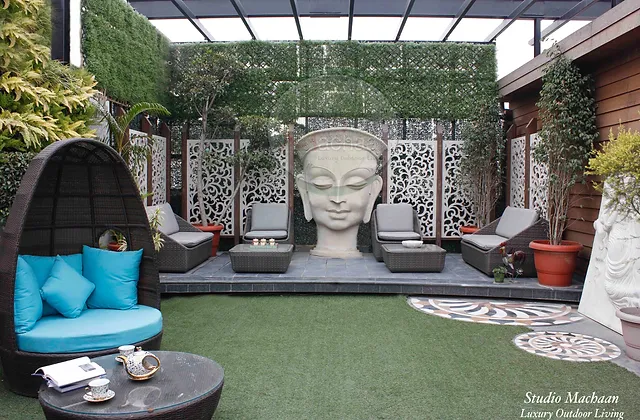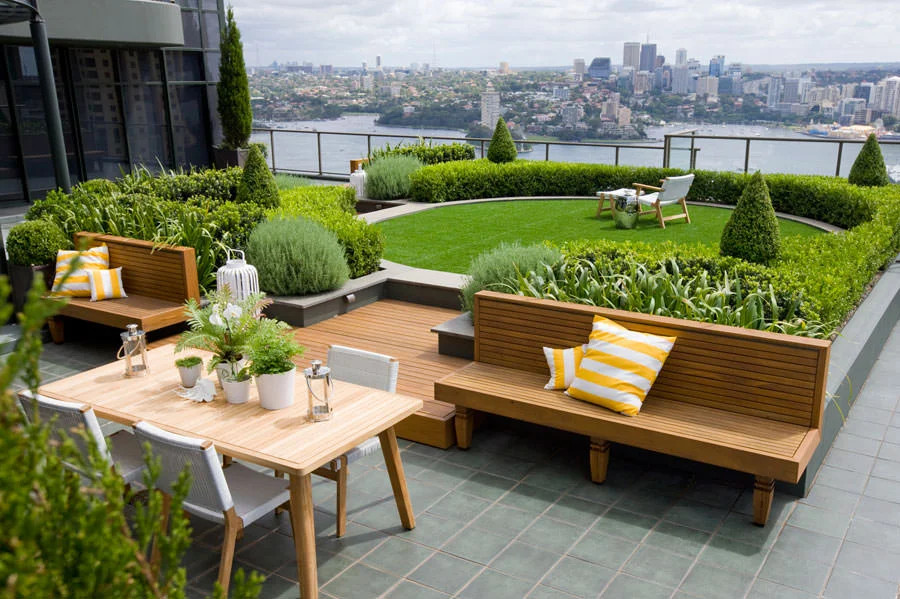Terrace Garden Design in Delhi/NCR
A terrace garden, also known as a rooftop garden, is a type of garden created on the rooftop or terrace of a building. Terrace gardens are gaining popularity in urban areas where outdoor space is limited, as they allow individuals to utilize their rooftops for gardening and create green spaces amid concrete landscapes.
Terrace gardens offer numerous benefits, including:
Maximizing Space: Terrace gardens make use of underutilized rooftop areas, effectively maximizing the available space. They provide an opportunity to create beautiful outdoor areas for relaxation, gardening, and socializing.
Improving Aesthetic Appeal: A well-designed terrace garden adds beauty and visual appeal to the building and the surrounding environment. The lush greenery, colorful flowers, and carefully arranged plants can transform an ordinary rooftop into an oasis of tranquility.
Enhancing Insulation and Energy Efficiency: Terrace gardens provide additional insulation to buildings, reducing heat absorption and improving energy efficiency. They act as a barrier against direct sunlight, reducing the need for excessive cooling during hot summer months and decreasing energy consumption.
Mitigating Urban Heat Island Effect: Urban areas tend to have higher temperatures due to the abundance of concrete and lack of vegetation. Terrace gardens help counteract the urban heat island effect by providing green spaces that absorb and dissipate heat, making the surrounding area cooler.
Terrace Garden Design Ideas of several factors:-
- Structural Considerations: Before establishing a terrace garden, it’s essential to ensure that the structure of the building can support the added weight of the garden. Consultation with a structural engineer is recommended to assess the load-bearing capacity and make any necessary reinforcements.
- Waterproofing and Drainage: Proper waterproofing and drainage systems are crucial to prevent water leakage and damage to the building. Installing a waterproof membrane, drainage trays, and a suitable slope for water runoff are important considerations in terrace garden construction.
- Container Gardening: Due to limited space and weight restrictions, container gardening is commonly practiced in terrace gardens. Selecting lightweight and appropriate-sized containers is essential for plant growth and easy maintenance. Additionally, choosing the right soil mix and ensuring proper drainage in containers are crucial for plant health.
- Plant Selection: Consider the microclimate of the rooftop, including sunlight exposure, wind conditions, and temperature fluctuations, when selecting plants. Opt for plants that thrive in similar conditions, such as succulents, herbs, ornamental grasses, and small flowering shrubs. Vertical gardening techniques, such as using trellises or hanging baskets, can also be employed to maximize space.
- Irrigation and Maintenance: Adequate watering systems, such as drip irrigation or self-watering containers, should be installed to provide water to the plants efficiently. Regular maintenance, including watering, fertilizing, pruning, and pest control, is necessary to keep the terrace garden in good health and appearance.
Terrace gardens offer an opportunity to connect with nature, create green spaces in urban environments, and enjoy the benefits of gardening even in limited outdoor areas. They bring beauty, sustainability, and a sense of tranquility to rooftops while contributing to environmental conservation and improving the overall well-being of residents.


